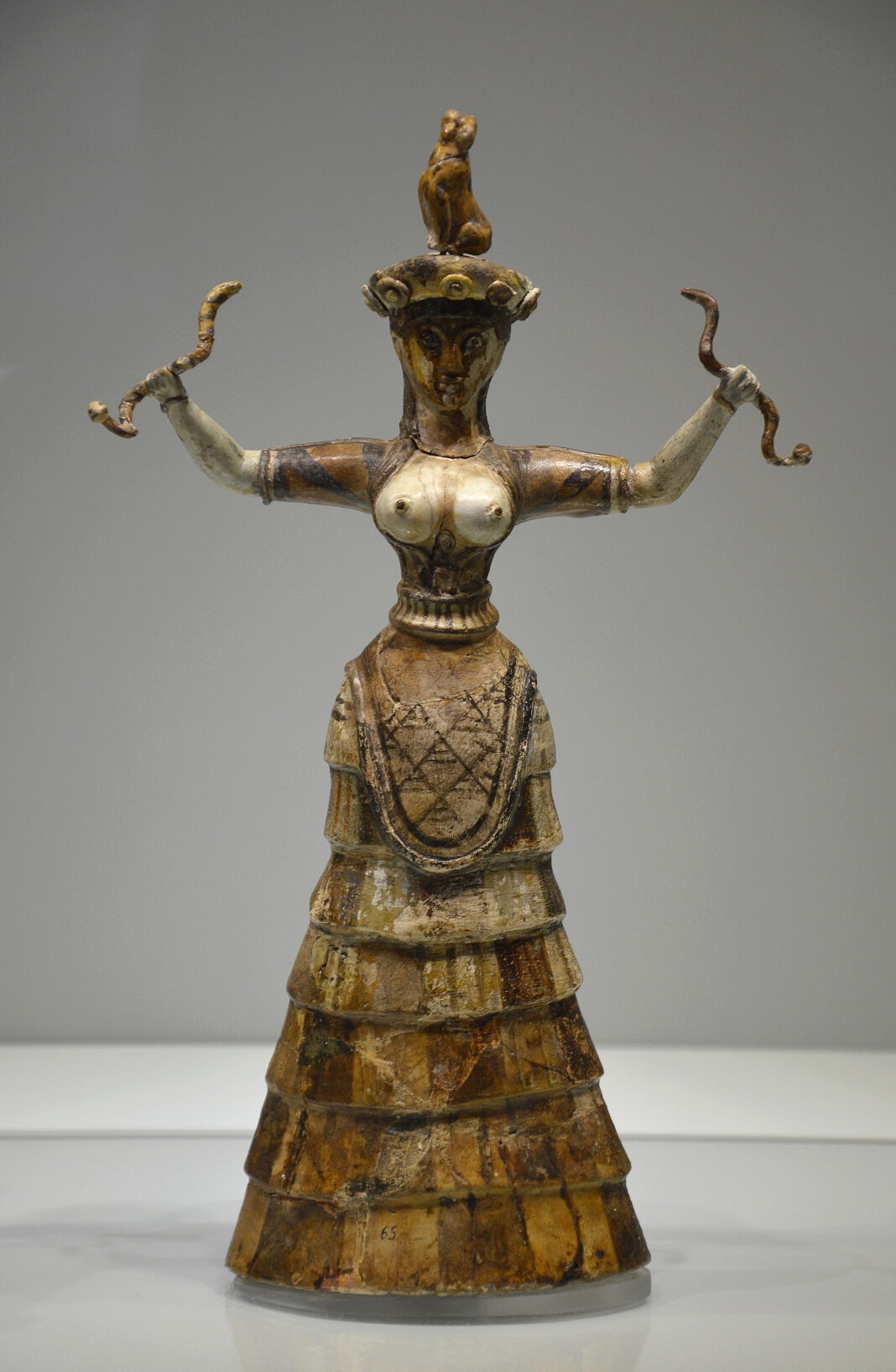As they march down the runway, the models reveal the ever-transforming look of fashion. Through changing beauty trends, makeup, and hairstyles, the face of fashion is constantly in flux. From extreme couture looks to subtle nods to the past, fashion’s ever-changing face is the story of beauty evolution on the runway.
1. Charting Fashion’s Transformation: The Evolution of Beauty in the Spotlight
For centuries, fashion has been a way of conveying social standing, embodying shifting trends, and expressing one’s unique sense of self. From the frills of the 1890s to the crop tops of the 2000s, fashion has seen drastic transformations, making a lasting impact on popular culture.
- 1920s: The Roaring Twenties ushered in new flapper looks with its associated embrace of youth, sexuality, and modernity. Women of the time showcased a sleek, wild style that rejected traditional corsets and long skirts for shapeless pullovers and beaded fringe.
- 1940s: While the government imposed fabric rationing during WWII, fashion designers still showcased their talent. Outfits began to diverge from the plain overcoats of the era, featuring bright colours and floral prints. In the post-war years, pin-up fashion became incredibly popular, emphasising femininity and allure.
- 1960s: In the 1960s, designers like Mary Quant pushed fashion forward with the introduction of mod culture. With its signature short hemlines and streamlined silhouettes, the boundary-breaking style of the time celebrated youth and freedom.
- 1980s: The 1980s ushered in the age of the power suit and the shoulder pad, all while continuing to honour the mod style. Alongside these signature looks of the decade, the rise of streetwear sparked a newfound appreciation for vintage streetwear and avant-garde looks.
The evolution of fashion is ever-changing, with each new trend redefining what it means to be beautiful. As fashion evolves, society’s standards of beauty are challenged, offering up a fresh perspective of what it means to feel comfortable and stylish.
2. Crossing Borders, Moving Lines: How Runway Fashions are Constantly Changing and Trending
The Enduring Presence of Retro Fashions
Fashion is constantly changing, and yet some looks never seem to go out of style. Retro designs, for example, often resurface after decades (or centuries!) off the runway scene. The 1920s flapper dresses and 1940s pin-up skirts are still spotted in styles today. With a few modern touches, these era-specific looks can appear completely new and trend-worthy for the current season.
Resurfacing Innovations
Innovations that have been explored over the decades are also making their way to the runways. Recently, transparent fanli skirts, which were originally introduced by the Efik people of Africa in the late 1700s, as well as Tibetan wrap skirts, inspired by traditional Bhutanese dress, have both been seen updated in collections for 2019.
Pushing Sartorial Boundaries
Going beyond traditional silhouettes, fashion designers are pushing the boundaries of fashion with inventive looks. The past few years have seen daring items such as:
- Kimono-style dusters (Carolina Herrera)
- 3D-printed slouchy sweaters (Knihil)
- Couture looks crafted from recycled materials (Monique Lhuillier)
- Genderless collections (Vetements)
Today’s fashion not only surpasses geographical borders, but it also moves far beyond sartorial standards as well. As these new designs make their way onto the runways, individual styles will take on a more daring, innovative, and trend-savvy appearance.
3. Shaping Society’s Ideas of Beauty: How the Runway is Constantly Challenging Us
As a visual art form, fashion has the unique ability to shape people’s ideas. Fashion designers convey a particular viewpoint through their collections, and the runway is their principal platform. For many fashion-conscious individuals, the look and feel of what’s presented on the ramp dictates the norms and sets the trends for the season. It’s no surprise, then, that the runway can also have a huge impact on how people perceive beauty.
Far from championing traditional ideals of beauty, modern fashion houses are consistently coming up with ways to challenge society’s perception of what is attractive. We’re no longer confined to the traditional parameters of beauty – age, body type, gender, race and disability are no longer limiting factors when it comes to enjoying fashion.
Designers are embracing diversity with open arms, inviting people from all walks of life to participate and join the show. Plus size models are becoming plentiful, visibly disabled models are getting their time in the spotlight, models of colour are now ubiquitous, and gender-fluid and transgender models are also becoming more common. In embracing all individuals, fashion is helping to foster an inclusive culture full of acceptance and appreciation.
Fashion has become so much more than a reflection of current trends and aesthetic. It has the power to transform how we think and feel about beauty and self-image. And with every new season, major fashion houses continue to revolutionize our ideas, inspiring us to think differently about beauty. Here are some ways fashion is challenging society’s perceptions of beauty:
- Age – there are no age limitations when it comes to style, with models of all ages strutting down the catwalk.
- Body Types – fashion is no longer limited to the “ideal” body type, with plus size, muscular, and petite models regularly walking the runway.
- Gender – gender labels no longer prevent people from participating in the fashion world. We’re now seeing genderless clothing collections, gender-fluid and non-binary models, and more.
- Races – models of all races are now a staple of the fashion world, meaning every kind of beauty is celebrated.
- Disability – the ramp now includes models with various disabilities, acting as an empowering reminder of one’s worth no matter the circumstances.
4. Preparing for the Unexpected in Fashion: The Elements of Evolutionary Surprise in Runway Style
Fashion is often associated with constant and ever-changing trends that come and go each season. While these styles come and go, they are rarely surprising or unexpected. To break out of this monotony, designers must look to the past for inspiration, and to the future for innovation. Drawing on both sources, they can create unexpected and evolutionary surprises on the runway.
Elements of Evolutionary Surprise
- Unexpected Colors – Trying an unexpected color on a standard silhouette or design can be a memorable and exciting addition to a runway look.
- Vintage Pieces – Incorporating vintage-inspired elements to a current look can bring out a unique balance of classic and modern.
- Experimenting with Shapes – Mixing up the standard shapes and forms of garments can add visual interest to a look.
Surprise doesn’t come solely from an individual garment. It can come from the overall design and concept of a collection. Patterns and prints can be used to add depth and texture to a show, while inspiring a certain amount of awe. Unconventional combinations of fabrics, prints, and textures can create an unexpected vision of what’s to come. Materials that are not typically found in fashion can surprise with their unique textures, shapes, and colors.
Exercising creativity in fashion doesn’t necessarily need to mean changing all the rules or making something completely outlandish. Subtle tweaks to existing silhouettes, materials, or concepts can be just as effective in creating a unique look and an unforgettable show. When fashion trends become tired, surprises are the only way to shock and awe the world.
5. Generational Education through Style: Teaching History Through the Eyes of Runway Fashion
Unlocking the Gates of Fashion History
From haute couture Charles Worth to the punk style of Vivienne Westwood, runway fashion is a reflection of the eras. While the fashion industry is often thought of as purely commercial, style is strongly shaped by events of the time. For those looking to learn about the progression of style through generations, runway fashion allows us to gain insight into past cultural norms and values.
Minimalism of the 1960s
The Sixties was a decade of revolution. Movements like sexual liberation and the women’s liberation found their way onto the runway, with designers using bright colors, cotton twills, and neoprene fabrics in order to create eye-catching statement pieces. Through this, fashion showed a shift from a gendered approach to style back to a more “utilitarian androgyny”.
Glamour of the 1970s
As the world of fashion changed, the Seventies saw the rise of glamorous, disco inspired styles. Structured silhouettes gave way to wildly exaggerated cuts, with shoulders and waists adorned with lavish jewels and shiny sequins. While this ostentatious style waned in the US, it held strong in Europe, where iconic designers such as Emilio Pucci and Yves Saint Laurent were embraced.
Technological Blends of the 1980s
As technology advanced, the Eighties brought a new wave of clothing technologies to the catwalk. Constructed details, innovative fabrics, and 3D patterning emerged to create unique, modern pieces. The decade also saw the rise of power-dressing, with garments designed to channel female leadership and ambition.
6. The Return to Simplicity: Returning Focus to the Basics of Beauty in Cutting-Edge Fashion
In today’s world, it is becoming more and more commonplace for fashion to take many different forms. While certain trends tend to saturate the industry with the same general looks, styles, and shouts, creativity should never be lost or put at the wayside for the sake of fads.
At the same time, beauty in fashion should always remain the priority. This is something that many of the top fashion houses have adapted to, by incorporating more classic cuts and designs into their work.
- High Quality Fabric – Designers are turning to unique but timeless fabric that is of the highest quality to create garments.
- Dedication to Craftsmanship – They are also focusing more on the craftsmanship and detail of the pieces, ensuring a perfect cut and flawless finish.
The result is a return to the basics of fashion. This sense of simplicity in design alleviates the pressures of trends and instead creates a space for true and lasting beauty to be expressed. It is a change in direction that many celebs and fashion enthusiasts have been embracing for the past few years.
The basics of fashion have always been a crucial element that often becomes forgotten about. Now, designers and fashion lovers are taking a step back to remove the chaos and to embrace a simplified yet powerful aesthetic.
Fashion’s ever-changing face has been and continues to be an exciting journey of exploration and beauty transformation over the years. So, take a seat in the front row and watch for the next surprise as fashion continues to push the boundaries in beauty evolution on the runway.


